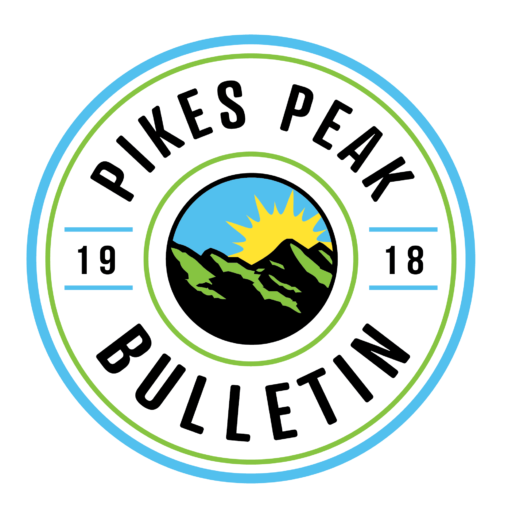The other day, a link popped into my text messages from Research-Polls, saying it was “conducting a study on local issues in Colorado.”
The first question was whether I viewed Colorado Springs Mayor Yemi Mobolade favorably or unfavorably. The same question regarding City Council came next.
Then, the poll rolled out what I’d consider a lavish proposed ballot measure aimed at the November 2025 election that would allow the City to retain all property tax revenue beyond the Taxpayer’s Bill of Rights’ revenue caps from 2024 through 2030. Then, for 2031 and thereafter, the property tax revenue cap would adjust year to year based on inflation.
Those funds, which weren’t quantified in dollars, as I recall, would be spent on public safety projects, such as the 911 call center, sworn police officer hiring and firefighting apparatus.
Essentially, the pollster wanted to know if I was willing to forego any TABOR refunds due to property tax revenue exceeding the cap and hand over the money for basic services. (TABOR is the long-standing law that imposes revenue limits on government agencies, unless relaxed or removed by voters.)
I don’t know who’s behind this poll, but one of the more prevalent canvassing firms locally denied any involvement, and the city itself is somewhat in the dark. City spokesperson Vanessa Zink says via email, “The City is not involved in surveying about removing TABOR restrictions. There is an effort, though, to explore a potential TABOR retention.” She didn’t elaborate.
Perhaps it’s worthwhile to look at this effort to dig deeper into taxpayers’ pockets in tandem with a citizen-initiated special election ballot measure designed to overturn Council’s annexation of Karman Line, a nearly 2,000-acre development that lies 3.35 miles from the southeast city limits.
Nick Raven, my former colleague at the Indy some years back, wrote an apt assessment for the May 9 Pikes Peak Bulletin about why this annexation is ridiculous. (My word, not his.)
The pertinent point he made was that nearly every issue in which the city has fallen behind, from potholes to long 911 queues to undeveloped parks, has arisen from “unrestrained suburban sprawl,” as he wrote.
Council supports the Karman Line annexation, having apparently drunk the Kool-Aid that it will somehow “pay for itself.” If that were true of past such annexations, why would some unnamed group now be testing the waters for a money grab via lifting TABOR revenue caps?
It’s also worth noting that whoever is behind this effort is apparently unfamiliar with the old saying, “Timing is everything.” With President Trump’s mad tariff frenzy well under way, which some economists say will wreck the economy, and with Congress on the precipice of annihilating Medicaid and other safety net programs, people are nervous.
Overall sales tax revenue through March is down slightly this year. Revenue comes from the City’s sales tax rate of 3.07 % – 2 % flows to the general fund for basic services; 0.1% for Trails, Open Space and Parks; 0.4% of a percent for public safety and 0.57 % for street repairs.
(At issue in the poll is property taxes, which provides roughly $29 million a year to the city budget, compared to roughly $400 million from sales taxes. Granted, the City’s mill levy is minuscule, comprising only $107 on the tax bill for a $482,250 house, the City’s website says.)
But now, take a look at what’s happened with the Lodgers and Auto Rental Tax, or LART. That combined 3% tax ( 2% for lodging and 1% for auto rentals) was up by 6.24% through March, compared to the same period a year ago.
Perhaps jacking up the LART tax is a measure whose time has come.
This year, the LART tax is expected to generate $10.5 million. In 2022, the total was $7.7 million.
The City’s website boasts that the LART tax is the 142nd lowest among 150 cities in the nation. So what? Why brag about being stupid?
Denver charges 10.75% for the lodger’s tax, and Aurora, 8%.
A 2019 study by the Hotel and Lodging Associat ion, issued in 2020, showed the rates of the 244 cities analyzed averaged 13.5%. All but 25 cities charged a rate of 10% or higher.
If people love to visit here so much, why not have them help us pay for the problems to which they contribute, such as police service needs, parks, streets and the like? While the LART revenue is now dedicated to tourism promotion, visitor attraction and economic development, voters could certainly change that mission, along with raising the tax rate at the ballot box.
If the City matched the Denver rate, the annual take would more than triple to $31 million. The City’s TABOR excess revenue, which voters have often allowed the city to keep, has never reached that level that I’m aware of. Two years ago, Mayor Mobolade sought unsuccessfully to retain the city’s TABOR refund of a mere $4.75 million, for example.
LART seems to be an untapped source that could help this tourist town keep up with its suburban sprawl needs. Of course, perhaps a reimagining of city growth would also help.
Point is, the poll I saw and responded to focused on property taxes, the bane of homeowners, and explored no other options for funding.
Perhaps jacking up the LART tax is a measure whose time has come.
And by the way, that poll’s first two questions? Obviously, they’re aimed at determining which officials should deliver the plea for voters to approve the ballot measure. Will it be Mayor Yemi? Or will it be Council? Or will it be none of the above?

